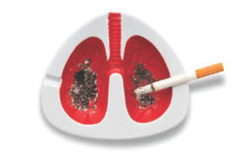 HOUSTON – November marks National Lung Cancer Awareness Month, an ideal time to increase education and awareness about one of the most fatal types of cancer and provide new information about potentially life-saving screening methods, said an expert from Baylor College of Medicine (www.bcm.edu).
HOUSTON – November marks National Lung Cancer Awareness Month, an ideal time to increase education and awareness about one of the most fatal types of cancer and provide new information about potentially life-saving screening methods, said an expert from Baylor College of Medicine (www.bcm.edu).
“Lung cancer kills more people than breast, prostate and colon cancer combined,” said Dr. Donald Lazarus, an assistant professor of medicine – pulmonary and a member of the NCI-designated Dan L. Duncan Cancer Center at BCM. “It may not be the most common cancer, but the most likely to be lethal.”
Conducting research on the causes of the disease and developing screening methods are critically important, Lazarus said.
“The good news is this year we have even more new data that shows a benefit to screening in high-risk populations, which could contribute to a decrease in lung cancer mortalities,” said Lazarus.
The high-risk group includes people aged 55 to 79 who have a smoking history of 30 pack-years or greater. A pack-year means that someone has smoked an average of one pack of cigarettes per day for a year; one pack smoked a day for 30 years equates to a 30 pack-year history or two packs smoked a day for 15 years).
Major groups such as the American Cancer Society and the U.S. Preventive Services Task Force support recommendations for screening in this group with a low dose CT scan.
If a positive screen comes back from a suspicious nodule, it’s important to see an expert in lung cancer, such as a pulmonologist or medical oncologist, to help you move forward appropriately, said Lazarus.
“Depending on what the screen shows, where the nodule is, how it is shaped and how easy it is to biopsy, the expert will help you decide the next course,” said Lazarus. “It could mean just follow up to note any changes or rule out any false positives.”
Identifying cancer early on in the lungs could prevent spread of the disease and death, he said.
While smoking represents the biggest risk factor for lung cancer, 10 to 15 percent of people who develop the disease are non-smokers.
Other risk factors include occupational and environmental exposures, such as second-hand smoke, which increases risk by 20 to 30 percent, and exposure to radiation such as radon gas, pollution, asbestos, arsenic, nickel, tar, soot and heavy metals.



